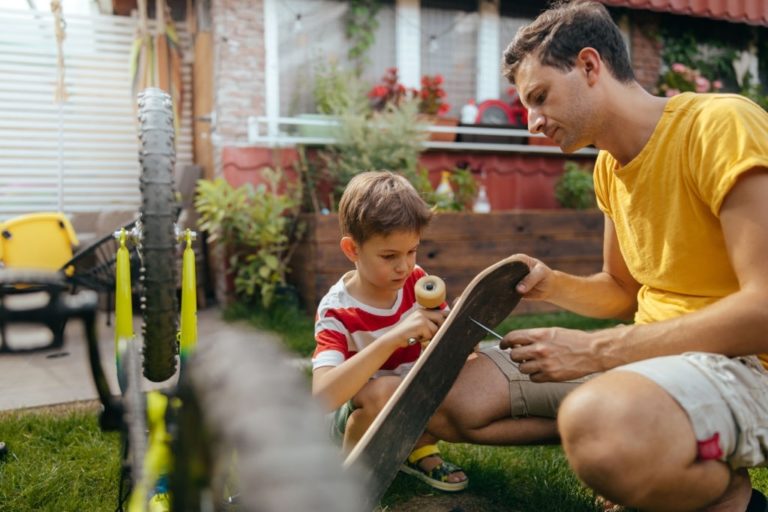Ever felt jealous of your skater friend for becoming an expert in skating? It’s quite a similar problem for a risk-taking and active person.
Skating is a skill. Not everyone has this skill in himself. It needs a lot of effort, practice, and patience to become an expert in skating.
So, how to become an expert in skating? Your practice and efforts become successful when you use the best skateboard brands. With the best beginner skateboard, it’ll not take too long to become a skating expert.
But why should you learn skating? Well, most of the skaters learn skating to take a new challenge and get an adventurous feel.
Nevertheless, it can be used as a quick transportation method for going to the nearest place. Besides, skating is a good form of exercise that keeps a person always fit.
The ultimate beginner guidelines of skateboarding
The ultimate guidelines of skateboarding start from selecting the best equipment to learning the tough steps of skating. Let’s discuss the beginner guidelines of skateboarding.
Step 1: Purchase the right skating equipment
The skating equipment includes skateboards, shoes, and safety gear. How to purchase the right skating equipment for a beginner? Here are the guidelines!
Select the good skateboard
If you’re going to learn skating for the first time, then selecting the right board is really important. You’ll find two main types of skating board-regular board, longer board.
Among them, the regular skating boards are more suitable for beginners. It’s not too longboard. Plus, the wheels of the skateboard are not so soft or hard.
However, when purchasing, make sure you’re choosing the best skateboard brands for better performance.
Shoes
Instead of using your regular shoes, you must use the skate shoes for skating. While skating, you need a firmer grip with maximum balance. It is not possible to get your usual shoes.
Safety gear
Safety gear is also important equipment needed for skating, especially when you’re a beginner. The safety gear includes a well-fitted helmet, hand gloves, elbow, and knee pads.
Step 2: Mount, Move, and Stop
Before you start, learn the basic thing about skating. The basic thing of skateboarding includes get on, start, ride, and stop.
It’ll be dangerous to start skateboarding without learning about those basic things.
Step 3: Push yourself.
Pushing is the beginning step of skateboarding. A major number of skaters start pushing themselves with their left leg. But that’s not obligatory. You can start skating with your right leg also.
In the beginning, keep the speed very lower; otherwise, you might face an unwanted accident. Do a lot of practice and try to increase your skating speed slowly.
Step 4: learn to Tic Tac.
When you’re comfortable on the speedy skateboard, you’re ready for learning the Tic Tac. Once you learn to keep your balance on a fast skateboard, the tic tac will automatically come.
You need to downward the backside of the skateboard a little to improve your skills in tic tac. Ensure the greatest control on yourself when practicing this step.
Step 5: Try the manual and nose manual skating.
After learning the Tic Tac, you can move forward to the next step of skating. Firstly, it comes to practice the manual process. Here you’ll need to down the right side of the board by maintaining your balance.
Another process is manual nose skating, where you have to upward the skateboard’s right side by adjusting the balance. It is actually the same as the typical manual process.
Step 6: Front slide and backslide
If you’ve learned the manual skating, then you’re prepared for learning the front slide and backslide skating. It is the trick where you need to adjust yourself with the 90 degrees forward turning board.
The backsliding with the skateboarding is almost similar to the front sliding. The difference is, you need to turn back your body when sliding the skateboard.
Step 7: Shove it
“Shove it” is a trick of skating 180 degrees upper from the ground. It needs a substantial balance on the body and expertise at all the above-listed steps.
Stand on your skateboard, push it with faster speed and spin the skateboard at 180 degrees underfoot.
Step 8: OILLE
OILLE is the more challenging and irregular step of skateboarding. You need to be expert at the steps given above before practicing OILLE.
In this step, you’ll push your body a few inches away from the ground. When skating, make sure to hold balance and grip of lag with the skateboard.
See also:
The sum up!
If you practice regularly, it may take several weeks, even some months, to learn skateboarding steps. It actually depends on your practice and dedication towards the sport.
As soon as you start skateboarding, the faster you’ll become an expert in it. Therefore, don’t wait any longer and start your practice today.

